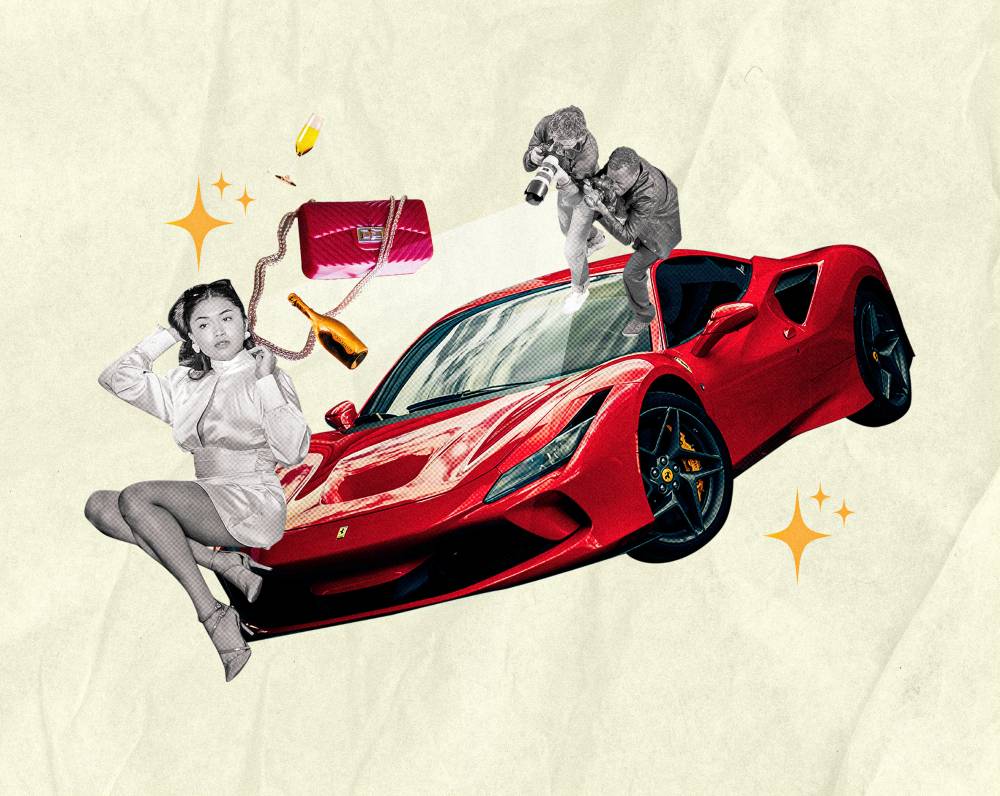The new status symbol isn’t a bag—it’s liking Formula 1

It’s Monaco weekend. Your Instagram feed is a blur of champagne flutes clinking on teak decks, silk flags snapping in the sea breeze, and zoomed-in shots of grid passes hanging like Chanel bags. There are girls in vintage Ferrari jackets posing on yachts they don’t own, and boys in tailored camp shirts with just enough chest showing to suggest effortless wealth. And from the yachts to the paddock to the pop-ups in Port Hercules, there’s not a trace of rubber or fuel in sight—just soft status wrapped in speed.
From Monaco to Melbourne, F1 weekends are the new playgrounds of travel influencers and soft luxury tourism. But it’s not just about the grid-side yacht parties and €5K hospitality passes—it’s the aesthetic of F1 itself that has become aspirational. What was once a “niche dad hobby” has transformed into a cultural signifier: a sport that fuses machinery, masculinity, and mega-money.
Liking Formula 1 now signals taste, status, and savvy. From overpriced merch drops styled like luxury streetwear, to TikTok’s obsession with driver fashion and paddock WAG culture, the F1 fandom is now a social currency of cool, even among people who’ve never watched a full race. Race weekend content, whether you’re in Silverstone or just streaming from your apartment, is the new Coachella—repackaged in speed and status.
But beneath the memes and Mercedes caps lies a real question: What does it mean to align yourself with a sport so deeply entwined with wealth, fossil fuels, and elite access? Is it aspirational, ironic, or just inevitable in an age where taste is always about power
From Paddock to Pinterest
Netflix’s “Drive to Survive” rebranded F1 from a technical sport into a global soap opera—one full of young, brooding drivers, billionaire heirs, and posh British accents. In doing so, it opened the gates for a new kind of fan: one more interested in the drama of the paddock than the aerodynamics of a rear wing. F1’s most powerful product is no longer the car—it’s the fantasy. A world where masculinity is brooding but manicured, speed is the new sex appeal, and every race is a capsule collection of privilege.
F1 weekends are no longer just sporting events—they’re tourism campaigns for the rich, or at least those who post like they are. Race weekend vlogs rack up millions of views. Miami became a neon fever dream of celebrities and TikTok stars. And Monaco remains the crown jewel—its port turning into a catwalk for soft power and curated opulence.
Then there’s the merch. Once stiff polos and bucket hats, now €500 windbreakers styled like fashion week drops. TikTok is full of content creators attending GPs without ever referencing the race itself: unboxing paddock outfits, comparing tote bags from sponsors, and vlogging through champagne-soaked grandstands. The races have become backdrops, not centerpieces.
F1, like so much in our culture now, is a fantasy you can rent.
Merch, money, and main character syndrome
Formula 1 isn’t just a sport—it’s a luxury brand. A simple team cap can set you back €120. This isn’t merch for the masses, it’s merch as access. To wear F1 today is to telegraph not just fandom, but a lifestyle.
F1 iconography has become shorthand for cool: team hats, vintage paddock tees, or driver numbers on crop tops. Even the humble tote bag—Ferrari, McLaren, Aston Martin—functions like a class marker. You’re not just repping a team, you’re aligning with a brand of aspirational masculinity, global travel, and expensive taste.
And it’s not just about what you wear—it’s about who you watch. F1 fandom has shifted away from tire strategy and lap times and into full character study mode. Fan edits treat drivers like pop stars, with dramatic music and slow-mo stares. Rumors swirl between drivers and models, while the WAG (wives and girlfriends) pipeline feeds into influencer culture, creating a media ecosystem where beauty brand deals and the paddock blend into one long Instagram story.
The result? A fandom that feels less like ESPN, more like K-pop Twitter or MCU TikTok. And with that comes backlash from traditional motorsport purists who resent the aesthetic takeover, the influx of casual fans, the TikTokification of a once-insular sport.
But that’s the thing about F1 now: it’s not just about who crosses the finish line, it’s about who gets the best edit.
The rich man’s sport: Irony or idolization?
Here’s the paradox at the heart of the modern F1 fandom: it’s largely driven by a generation that is vocal about climate change, late-stage capitalism, and inclusivity—yet is captivated by a sport bankrolled by oil money, billionaires, and car culture. How did we get here?
Maybe it’s irony. Maybe it’s a cultural reclamation. For many new fans—especially women, queer people, and creatives—F1 isn’t about glorifying horsepower or hedge funds. It’s about finding new ways to engage with a hypermasculine, elite space: through fashion, through driver personas, or even through memes and montages that turn carbon-fueled competition into character drama.
Still, the tension is there. F1 is deeply inaccessible. You need a VPN, multiple subscriptions, or pirated streams just to follow a full season. Merch is priced like street couture. Race weekends are pay-to-play spectacles.
In the end, liking F1 becomes a question of performance and participation. Are we aestheticizing inequality, wrapping fossil fuel sponsorship in pastel edits and clean girl outfits? Or are we creating space—however flawed—for alternative readings of a sport built for the elite?

















